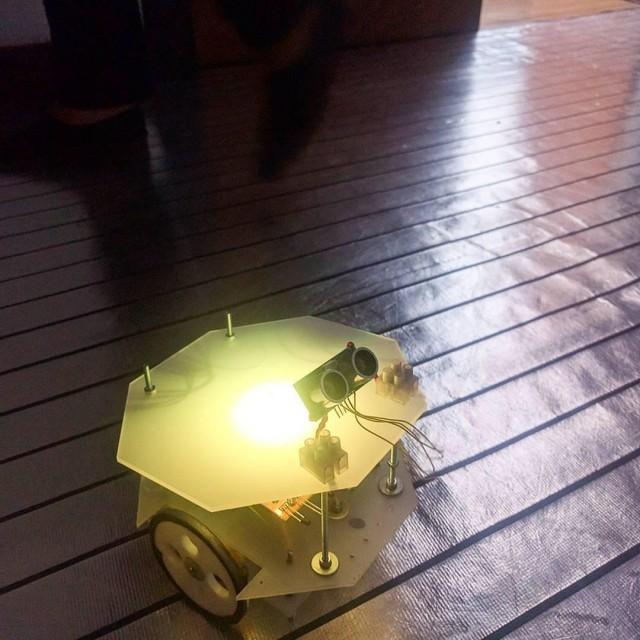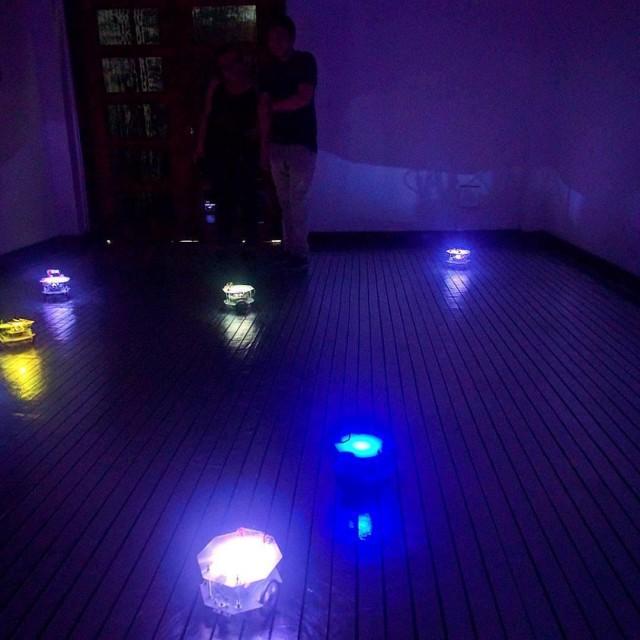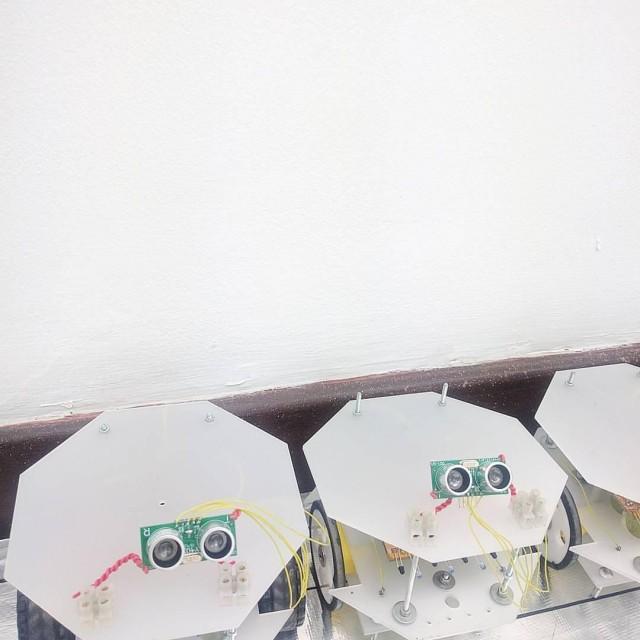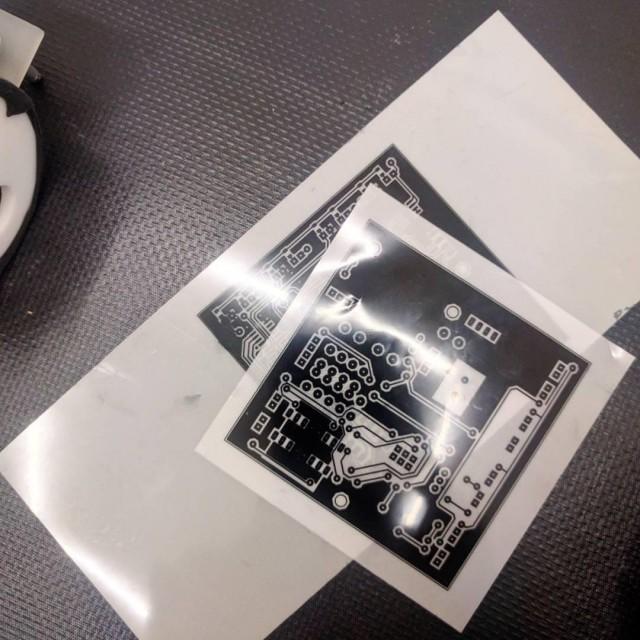Pinoy artist, engineer build interactive robot virus
Viruses, be they computational or biological, are always seen in a negative light—harbingers of disease and doom. But at least one Filipino artist sees them differently.
Known for his playful experiments in science and robotics, Ian Carlo “IC” Jaucian dabbled with the idea of creating a computer virus that doesn’t seek to destroy and suck the life out of its host but, rather, breathes life into it. His explorations led to his on-going exhibit Viral Automata at 1335MABINI in Manila.
Inspired by Conway’s Game of Life, Viral Automata is composed of ten battery-less, two-wheeled robots moving in a seemingly arbitrary flow on an aluminum-laden floor.

The entire gallery floor is covered with alternating positive and negative strips of aluminum tape that are connected to a 12V power supply from an old computer. Each robot has four spring-loaded contacts that draw electricity from the floor when at least one contact hits a positive strip and a negative strip at the same time.
“I wanted to save on electricity. That’s why I designed it this way,” the artist shared.
At the beginning of the show, the nine robots were “lifeless.” In the dark gallery, only one robot had the “virus”—a special set of computer code designed to spread and affect its hosts' behavior.
After activating the “mother host,” the code spread relentlessly, turning on the “dead robots” after each infection. Lit with a variety of colors—red, yellow, green, purple and white—the robots danced across the shimmering floor, a fascinating danse macabre.

All the robots have ultrasonic sensors to recognize and avoid obstacles. Without stumbling blocks, the robot refers to a part of its viral code to determine its motion and color.
“There are a few robots that are permanent viruses – they do not lose the code even when they reset. Most are non-permanent viruses – they are able to receive and transmit the virus code but do not retain it when they reset or get disconnected from their power supply. This inability to retain the virus was intended for long-term exhibit purposes,” the artist explained.
The robots are also self-governing, and have infrared transmitters and receivers. These IR sensors transmit the virus from one robot to another. Uninfected robots are white, but once infected, the robots adopt an array of colors.
“Each robot is autonomous. There’s no centralized brain that dictates how they interact. They only interact when, in the middle of all their chaotic trajectories, their IR sensors line up and are a few inches from each other and transmit and/or receive data,” Jaucian elaborated.

A novel virus prototype
The installation is not a demonstration of virality per se, but a novel model for a computer virus.
“A virus, whether computer or biological, is a piece of code—written or genetic—that replicates itself through a host. In this case, the part of the code that dictates movement and color is what is propagated through the host robots. Unlike traditional computer viruses, each host has exactly one virus, so to liken the installation to a computer virus, it may be something like traditional computer virus is to code to operating system, while viral automata is to code, wheels and sensors to swarm of robots,” the artist explained.
It's a rudimentary model of artificial life.
“As far as I know, a computer virus is always malicious. But in this project, the virus we created is the lifeblood of the system. It dictates the action of the group of robots,” the artist said.
“In a sense, the virus gives the robots a sense of purpose. It gives them a reason to replicate because it will spread and prolong their ‘species.’ The viral code gives life.” he added.
The Open Source Movement and Laredo Hackerspace
Jaucian didn’t write the virus in his show. He was good at electronics and art, but was a beginner at programming. So, he sought help from the engineer behind Laredo Hackerspace. One of the co-founders of PhilRobotics, the owner of Laredo Hackerspace is an engineer who has a Fine Arts degree. Jaucian met him at WSK’s living lab for Art Fair Philippines where they both helped in.
“I did the mechanical build of the robots, and he wrote the code,” Jaucian shared.

Since the code, the virus, is a big part of the show, who owns the rights for the art work? Is it Jaucian or the engineer?
“We never really talked about issues on ownership. It was clear that it was my art project, that he was just helping me. But, it ended up as a collaboration. I think he ended up enjoying the challenge and really contributed a lot of his own ideas to execute my concepts,” Jaucian said.
“I’m happy to be IC’s fabricator. That’s it,” the anonymous engineer shrugged.
An advocate of the open source movement, the owner of the Laredo Hackerspace is not really concerned about owning what he builds. Rather, he is more interested on sharing what he knows and letting other people build on it.
The World’s Largest Drawing
The open source movement has allowed Jaucian to understand and demonstrate complex scientific and philosophical theories in his exhibits. From dark matter, to time, to the automation of life, Jaucian will continue to make sense out of realities that elude common sense.
He shared that one of his dream projects is to create the largest drawing in the world by connecting the satellite dishes of domineering countries hovering above the planet to form a planted “conquer” flag that symbolizes dominion and freedom. In a way, it shows how tech and the open source culture democratizes power. He hasn’t figured out how to do it yet. But it’s definitely a project to be ticked off his bucket list. He’s currently looking for people in the aerospace industry who could help him make it happen. — TJD, GMA News
Viral Automata runs until June 27 at 1335 MABINI at Ermita Manila. For more information, visit 1335MABINI.




